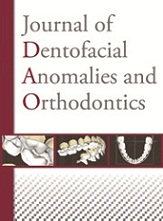Article contents
The diagnosis of mandibular assymmetries
Published online by Cambridge University Press: 03 February 2014
Abstract
Asymmetries are found in every living being. A non-symmetrical structure is not necessarily pathological. Why then, is the diagnosis of asymmetry relevant for us as practitioners? In orthodontics, we can anticipate difficulties with treatment if we are well informed about the principles of symmetry and thoroughly familiar with craniofacial growth.
Severe mandibular asymmetry is relatively rare, appears early and becomes apparent at first sight to the practitioner. We find it associated with syndromes in patients for whom early multidisciplinary treatment is indicated.
Dyssymetry is a defect rather than an absence of symmetry. It is a mild form of asymmetry where the line between pathological and nonpathological is still unclear. The face can present different types of dyssymmetries including the whole gamut ranging from dental imbalance to imbalances of the jaws to cranial imbalances, each with its own signature that leaves its characteristic mark on the face. When dealing with mandibular laterodymorphias, the diagnosis must be made early in order to initiate an individualized treatment plan. We are providing some summary fact sheets that make it possible for the practitioner to clearly distinguish between the principal mandibular anomalies.
- Type
- Research Article
- Information
- Copyright
- © RODF / EDP Sciences
- 2
- Cited by




